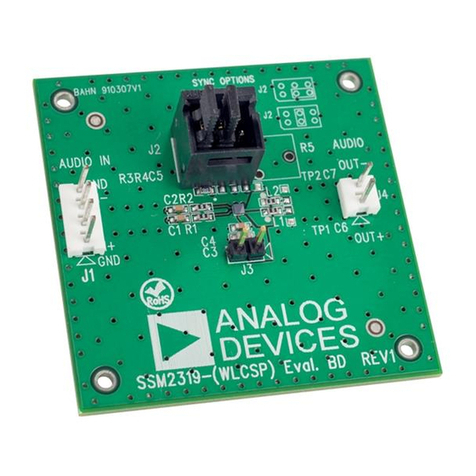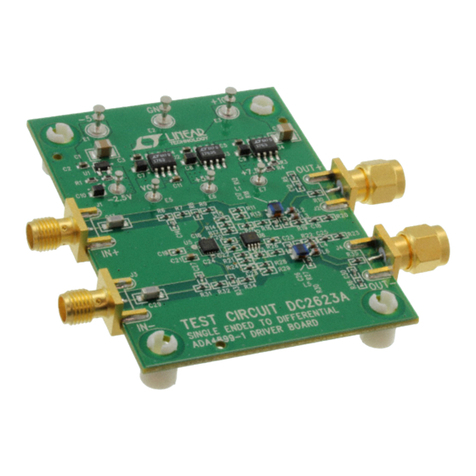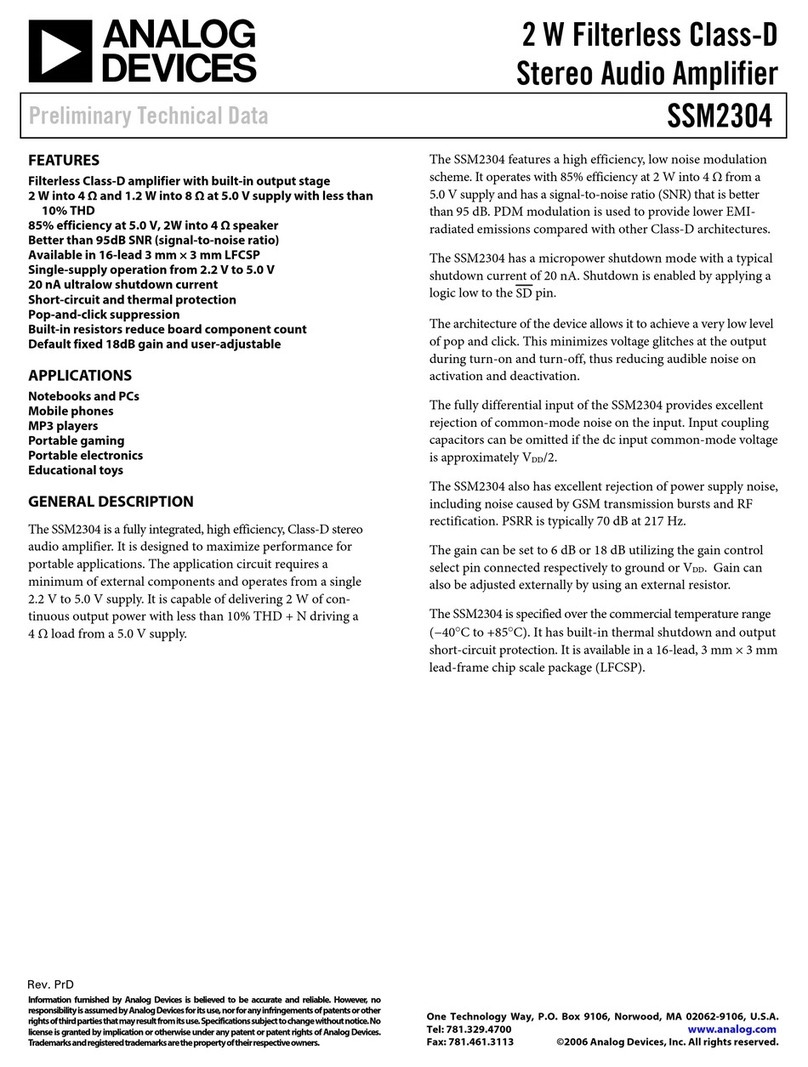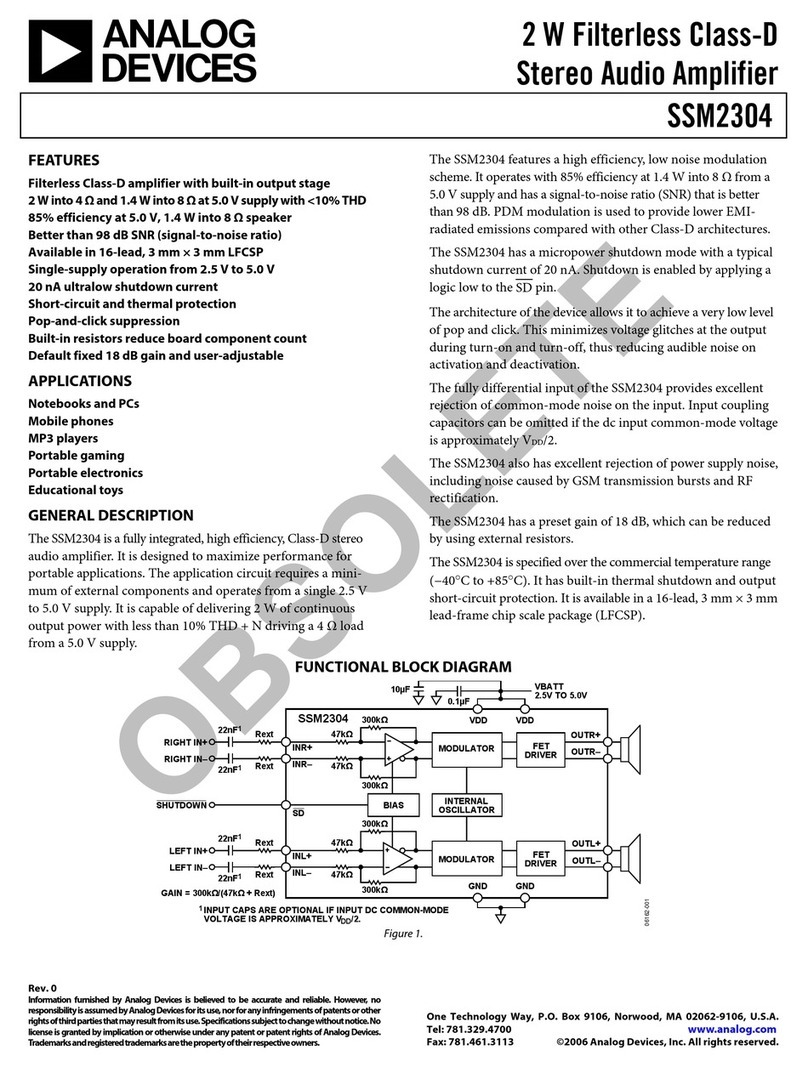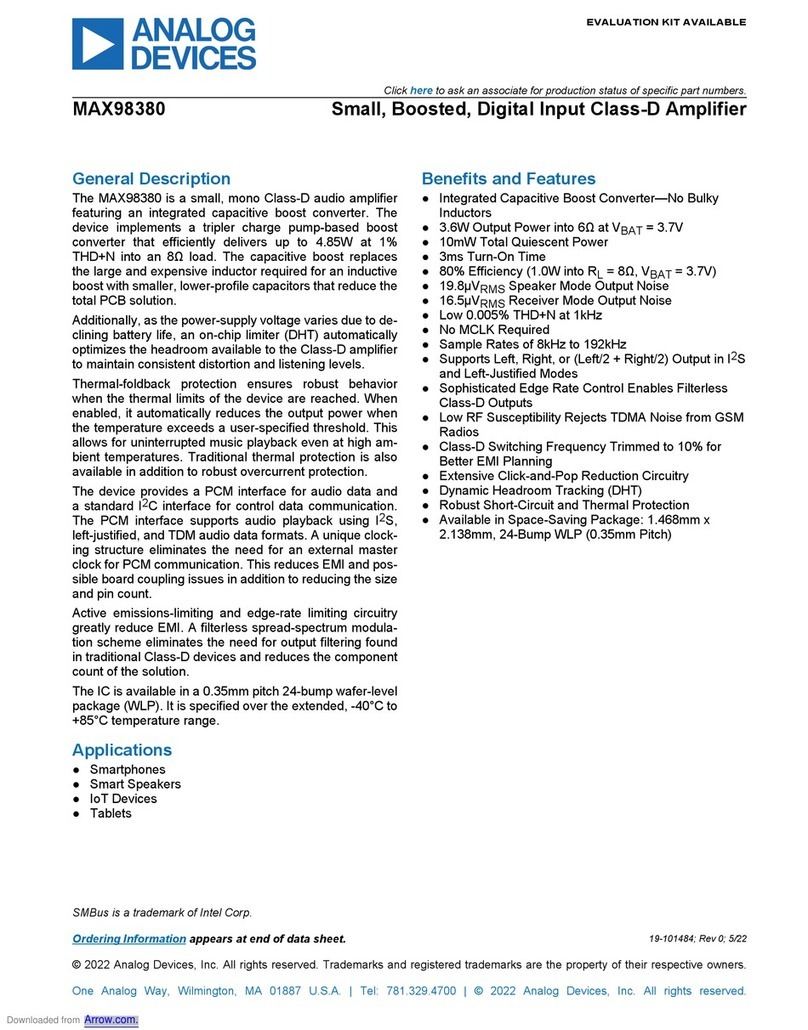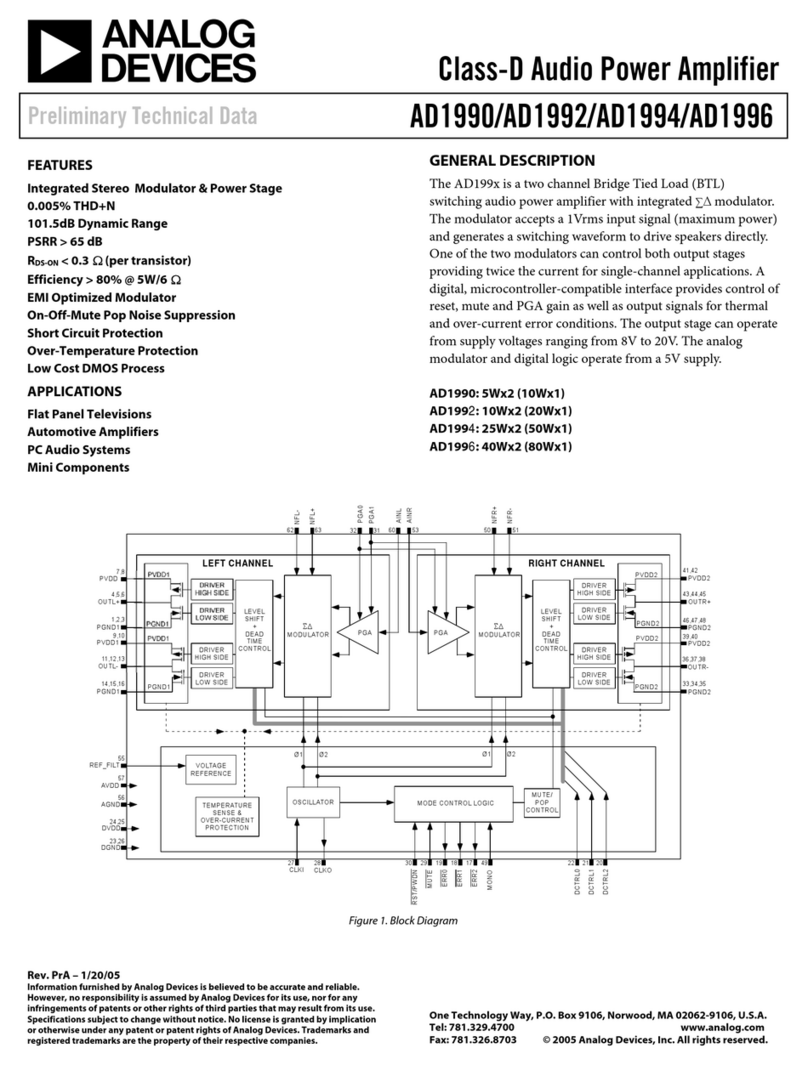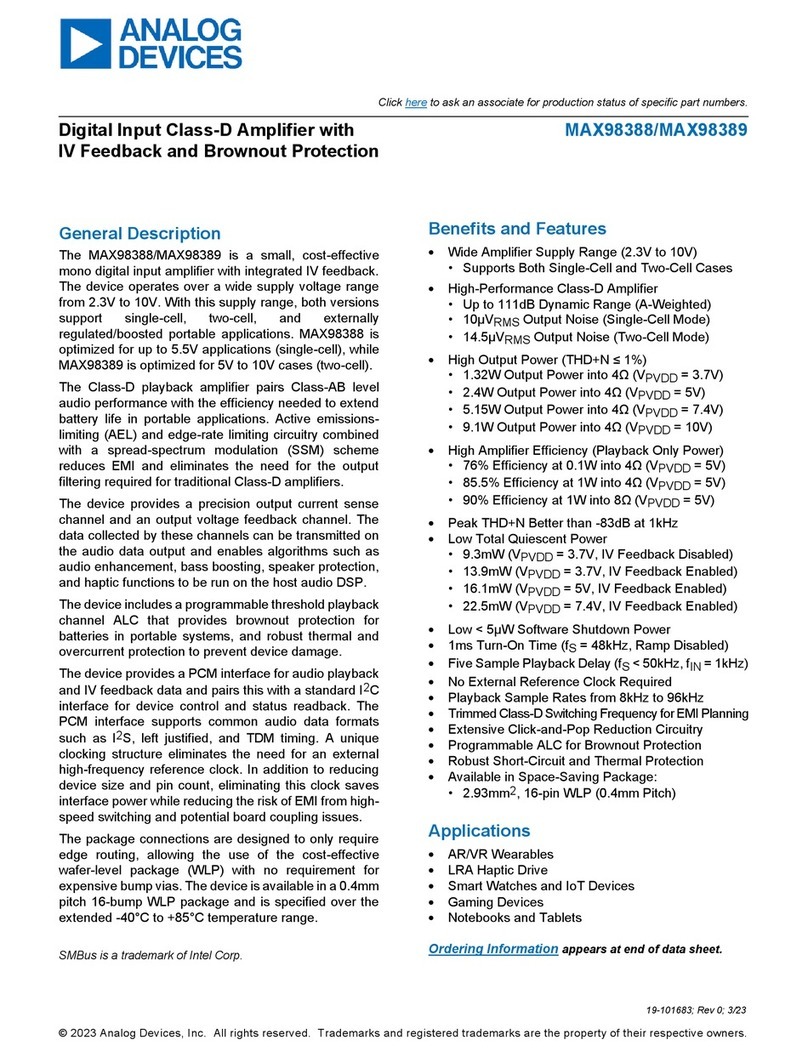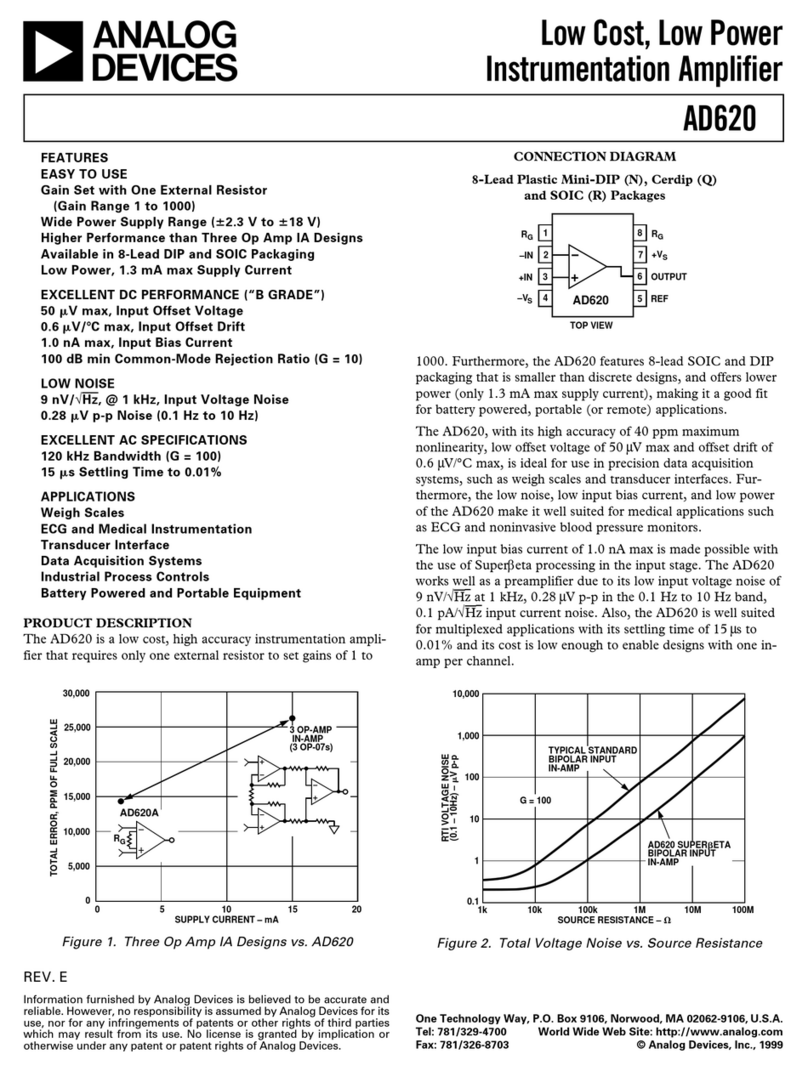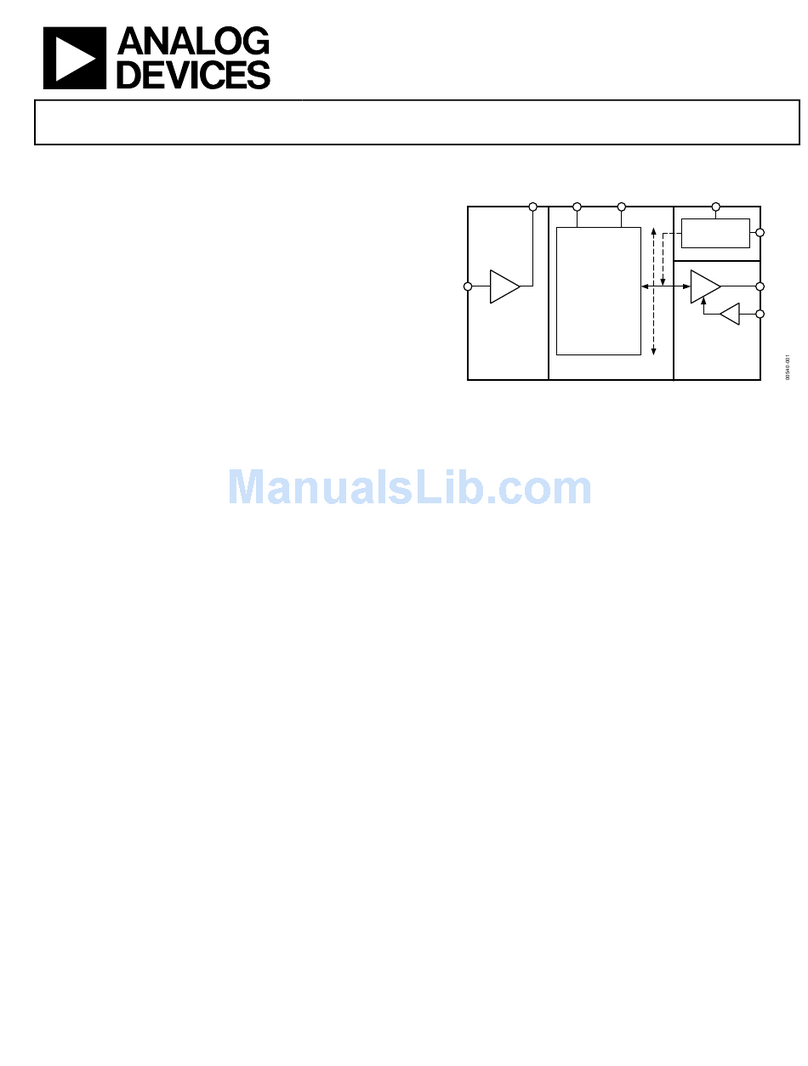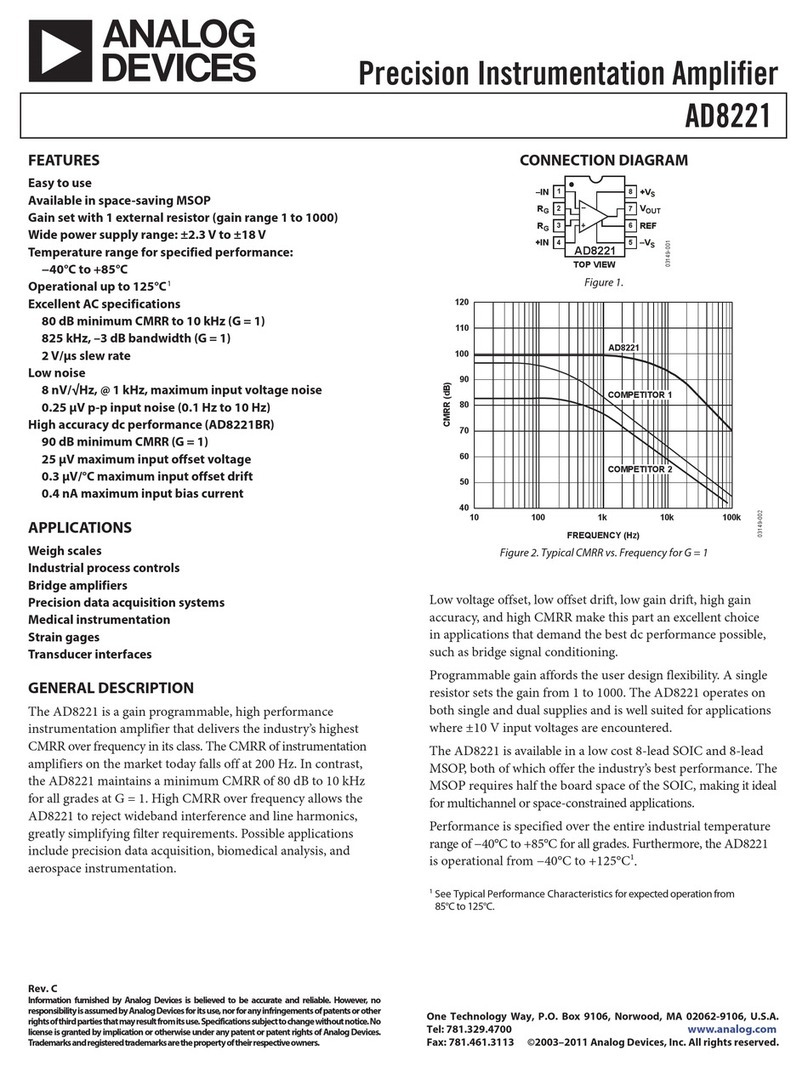
www.analog.com Analog Devices
│
3
MAX98361 Evaluation System Evaluates: MAX98361 (WLP)
Detailed Description of Hardware
The MAX98361 EV system is designed to allow for a thor-
ough evaluation of the MAX98361 digital input Class-D
audio amplifier IC. The EV system includes the MAX98361
development board (DEV board), Maxim’s Audio Interface
Board III (AUDINT3), and a Micro-USB cable.
The MAX98361 DEV board can be evaluated as a stand-
alone board that is driven directly by audio test equipment.
To simplify the evaluation, the DEV board can be evaluated
with the AUDINT3 board, which allows any computer
to become a digital audio source. The AUDINT3 board
provides on-board LDO regulators and a USB-to-PCM
interface to provide an easy-to-use method for exercising
the capabilities of the device with no additional audio
equipment.
The AUDINT3 LDO regulators power the MAX98361
DEV board’s VDDIO pin through connector J1. The
USB-to-PCM converter accepts a USB audio stream
from a USB connected computer and converts that into
an I2S (MAX98361A/C) or left-justified (MAX98361B/
MAX98361D) data stream, allowing for USB audio playback
through the MAX98361 device. Do not use the AUDINT3
board while directly driving the DEV board’s PCM interface
with external audio test equipment since the Digital Audio
Interface (DAI) pins for the DEV board and AUDINT3 are
connected through the J1 header.
Power Supplies
The MAX98361 DEV board requires two external power
supplies when evaluated as a stand-alone board. The
VDD supply provides system power to the MAX98361
IC. This voltage can be applied externally at the VIN and
GND PCB pads, or 5V can be provided from the AUDINT3
board. See Table 2 for the J5 jumper selection. The 5V
supply from the AUDINT3 board should be used only for
functionality tests and should not be used when driving a
speaker load due to the low current limit of the on-board
5V supply.
The voltage applied to the VDDIO test point determines
the logic level of the EN pin when SW1 is in the on position.
The power supplies and their ranges are listed in Table 1.
The external supply voltages can be connected at the
respective supply test-points and/or binding posts.
When using the AUDINT3 board, the AUDINT3’s on-board
LDO regulator independently powers VDDIO on the DEV
board. This power is routed to the DEV board through the
J1 connector. See the Digital Audio Interface section.
Jumper Selection
Shutdown Mode
The DEV board includes switch SW1 to facilitate a device
enable. The device features a low-power shutdown mode
that is activated by setting SW1 in the “OFF” position. To
exit shutdown mode, set SW1 to the “ON” position. When
the PCM master is disabled and SW1 is in the “ON” posi-
tion, the device is in standby mode. Enabling the PCM
interface while SW1 is in the “ON” position puts the device
in active playback mode, and the device output begins
switching.
Table 1. Power Supplies
Table 3. Jumper Configuration
Table 2. J5 Jumper Selection (VDD) Supplies
POWER SUPPLY RANGE (V)
VDD 2.5 to 5.5
VDDIO 1.2 to VDD
HEADER SHUNT POSITION DESCRIPTION
SW1 EN to DVDDIO Normal operation
EN to GND Shutdown
SHUNT POSITION INPUT VOLTAGE (VDD)
1-2 VDD supplied by AUDINT3 board
connected to J1 header
2-3 User-supplied external power supply
applied at the VIN PCB pad
